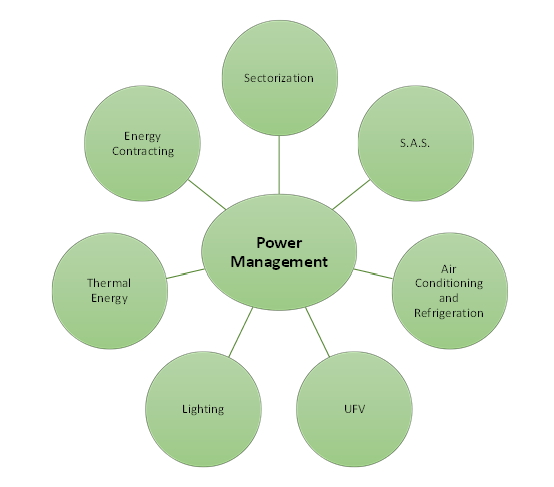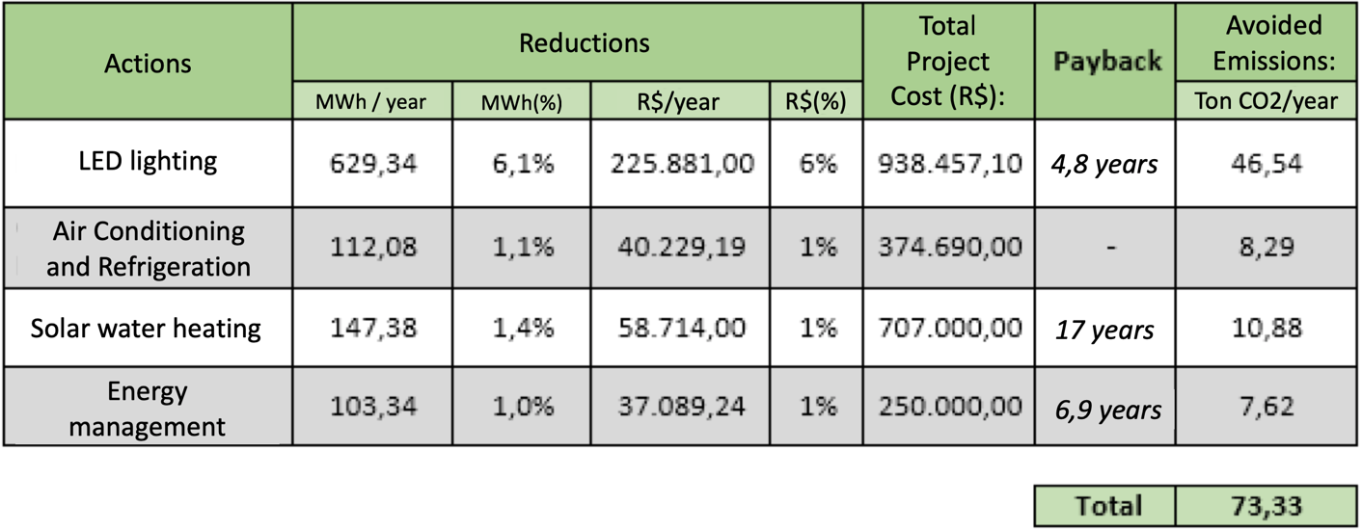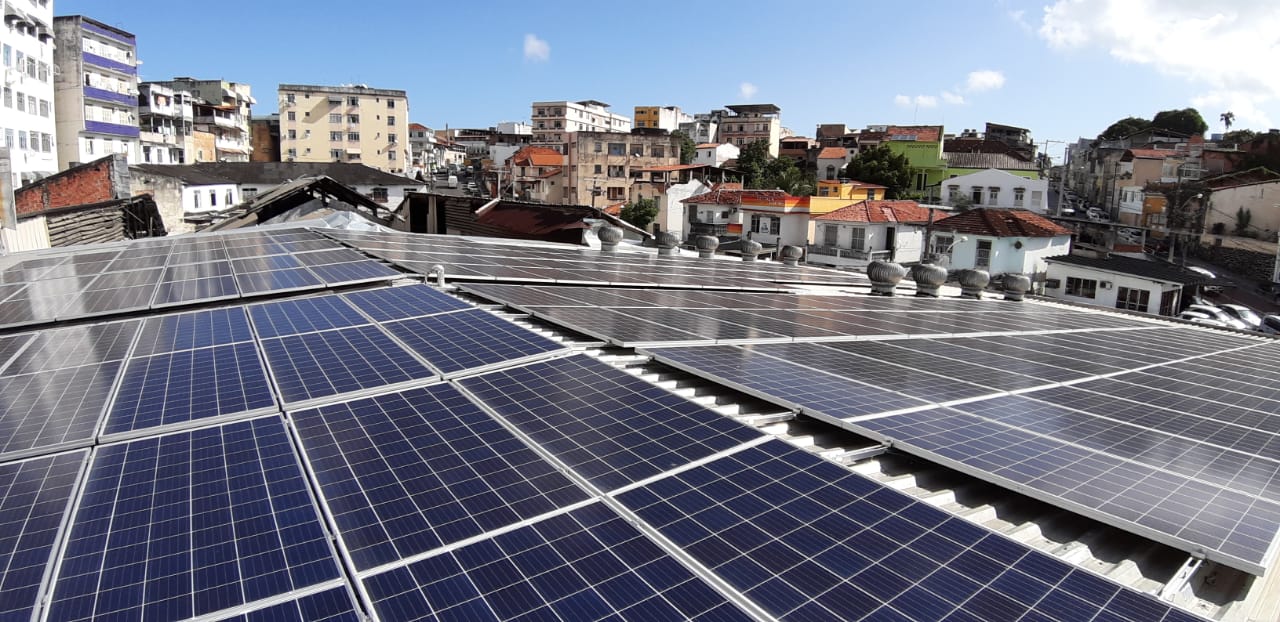Sustainable Health in Procurement Project (SHiPP) case study: Santa Casa da Bahia, Brazil
Location: Salvador, Brazil.
Work area: Products, Process.
Summary: Maintain the same level of electrical energy consumption through the year 2028 using the limit calculated for 2020. This level will be maintained even with the expansion of the hospital and the potential increase in thermal loads used. Reduce GHG emissions by 50% by 2030 compared to 2020.
Initial situation
Eco-efficiency in hospitals is essential given that hospitals are one of the main service providers in the health system and an important consumer of electricity. The Hospital Santa Izabel (HSI) is a hospital complex with 128 years of uninterrupted activity. It covers 32 blocks and has over 53,000 m² of built area, 487 beds, and areas where air conditioning and lighting operate 24 hours a day. In 2017, concerned with the increase in energy costs and aware of the need to adopt sustainable practices, preserve natural resources and reduce GHG emissions, hospital managers decided to focus on energy efficiency. When updating equipment, or negotiating renewable energy, they will consider renewable self-generation, and work to improve habits to reduce energy usage.
Proposed alternatives
After an energy audit by a specialized third party, the electric energy management process started in 2017 to conceptualize and evaluate the opportunities for improvement in energy efficiency in the facilities of Hospital Santa Izabel. The Energy Management Program was created (figure 1) after defining the investment priorities, and is summarized in six stages:
Consumer efficiency actions:
- Sectorization.
- Solar Heating System - SAS.
- Air Conditioning and Refrigeration.
- Lighting.
Actions for renewable energy consumption:
- Photovoltaic plants - UFV.
- Energy contracting in ACL.

Figure 1: HSI Energy management program
This program has been made possible both with the hospital’s own resources and with resources obtained through external incentives via a public call for proposals.
Progress and benefits
The structure of photovoltaic plates for electricity generation installed at the Pharmaceutical Supply Center and at the Álvaro Lemos Clinic meet 45% and 20% of demand, respectively, with an emission reduction of 8.17 tonCO2e/year and 0.8 tonCO2e/year. This not only represents a significant average monthly saving in terms of money but also helps ensure that the energy consumption at HSI satellite units that are not part of the free energy market are engaged in renewable self-generation.
In addition, with the continued purchase of renewable energy via the free market, in 2018 HSI saved 1,87 million Brazilian Reals (over $359,000 US Dollars) in relation to the captive market. The Institution renewed its market share through 2028, guaranteeing consumption by a renewable source and promoting the generation of energy by alternative sources in the country.
In 2019, HSI acquired Renewable Energy Certificates, ensuring that all energy consumed by the hospital in 2018 was from wind power. This action led to a 30% reduction in GHG emissions.
Figure 2 shows the expected results for actions at HSI with a direct impact on consumption.

Figure 2: Results calculated with the consumption efficiency actions at HSI.
Another thermal energy project called “Hybrid Laundry” is being implemented in the HSI's internal laundry, focusing on the use of renewable electrical energy in the fossil energy transition process. Completion is scheduled for November 2022, with an estimated annual savings of R$680,000.00 (around $130,759 US Dollars), and a 30-40% reduction in Scope 1 GHG emissions.
Implementation process
Thirty-five internal energy meters were installed for the sectorization of buildings and units, and integrated with online software for real-time monitoring to create performance and consumption indicators, and to identify any anomalies.
Onve hundred nineteen solar panels for water heating have been installed, covering 50 toilets in 7 of 9 hospital wards. This created savings up to 80% of the consumption associated with this process.
For climatization and refrigeration units, all the air conditioning units and systems installed in the hospital were registered, and a retrofit of the main Cold Water Plant was carried out, and 9,550 lamps were replaced by LED technology in the hospital and satellite units.
As HSI is already part of the Free Energy Market and buys incentive and alternative energy since 2012, two satellite units of the hospital were chosen for the implantation of photovoltaic plants (figure 3). They are part of the Regulated Contracting Environment (ACR - Ambiente de Contratação Regulada in Portuguese), that is, totally dependent on public supply.

Figure 3. CAF photovoltaic plant.
For the Hybrid Laundry project, the thermal energy used in the laundry (BPF fuel oil) was replaced with an Electric-LPG hybrid composition. At the Materials and Sterilization Center (CME – Centro de Materiais e Esterilização), steam generation in the autoclaves uses 100% renewable energy.
Next steps
The elaboration and implantation of an electric energy management system are fundamental for the control, mapping, and efficiency of consumption. In this way, as next steps, the following actions are under feasibility analysis by Santa Casa da Bahia:
- Completion of the Santa Casa da Bahia Photovoltaic Power Plant, for the purpose of shared generation and service to the other business units of the organization.
- Adding a new consumer unit to the free energy market, ensuring consumption by an incentive and alternative source.
- Acquisition of renewable energy certificates for the following years.
Information about the organization
Santa Casa da Bahia is a charitable association of social assistance that proposes to exercise charity and provide services in the areas of health, teaching and research, education, culture, and burial, forming a complex of high quality activities, regardless of creed or religion. Hospital Santa Izabel works with 39 specialties, of which it is a reference in 6, and has important certifications such as QMentum Diamond and HIMISS EMRAM level 7.
